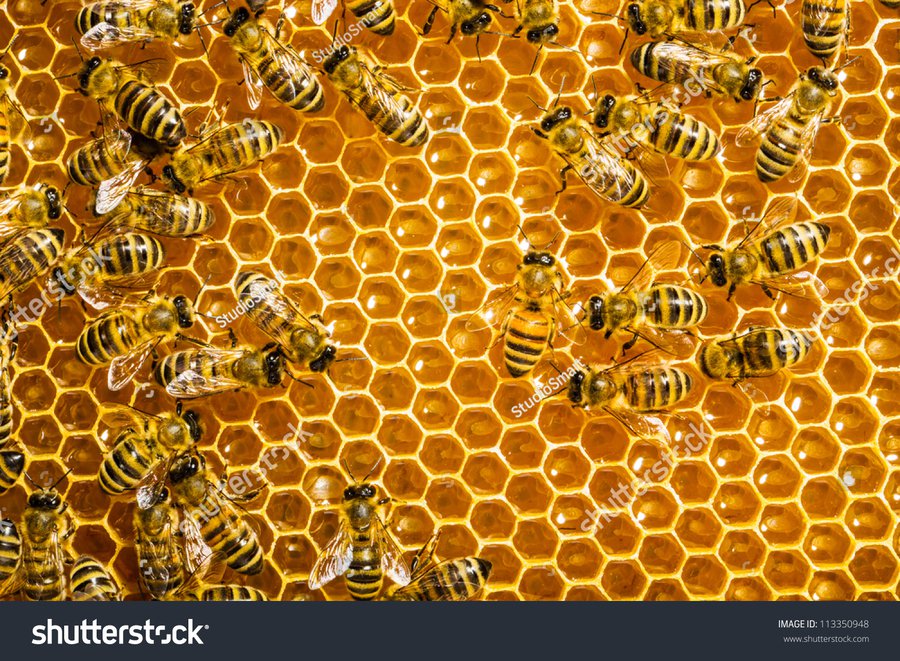Why are Honeycomb Cells Hexagonal ?
These circular cells are packed together like a layer of bubbles. The wax is softened by the heat of the bee's bodies and gets pulled into hexagonal cell shape by surface tension, mass and gravity at the junctions where walls meet.
A regular geometric array of identical cells with simple polygonal cross-sections can take only one of three forms: triangular, square or hexagonal.
Honeycomb is constructed essentially as vertical plates which hang down.
Of these only natural hexagons can divide up the space most efficiently. If we interrupt honeybee's by smoking them out of the hive we can find that the most recently built cells have a circular shape, whereas those just a little older have developed into hexagons.
The worker bee's heat the wax with their bodies until it reaches about 45 C and flows like a viscous liquid. Therefore hexagons result automatically as the wax cools from the pressure of each bee trying to make its cell as large as possible, adding internal pressure to mass and gravity.
Hexagons are natures way of resolving all forms of circular bodies under pressure. Examples of this are many.
When first made, the comb cells of the honeybee are cylindrical tubes, but they become more hexagonal in cross section as time goes by.
Therefore this hexagonal architecture is not only because of the simple physical and natural phenomenon of mass and gravity but also due to the active participation of worker bee's providing warmth and internal pressure to the wax cylinder.



